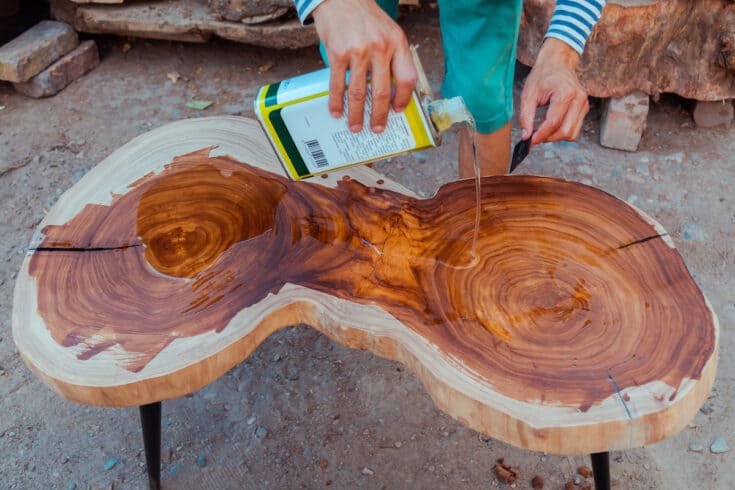Introduction
In the realm of wood finishing, tung oil and teak oil stand out as two prominent contenders, each offering distinct characteristics and benefits. Understanding the differences between these two oils is crucial for achieving optimal results in woodworking projects. In this comprehensive guide, we delve into the properties, applications, and advantages of both tung oil and teak oil to help you make an informed decision.
Tung Oil: Nature’s Finest Protector
Tung oil, derived from the seeds of the tung tree (Aleurites fordii), has been prized for centuries for its remarkable protective properties and lustrous finish. Renowned for its ability to penetrate deep into the wood, tung oil forms a durable and water-resistant seal that enhances the natural beauty of the wood grain.
Benefits of Tung Oil
- Deep Penetration: Tung oil penetrates deeply into the wood fibers, providing long-lasting protection from moisture and other environmental elements.
- Enhanced Durability: Once cured, tung oil forms a hard yet flexible finish that withstands wear and tear, making it ideal for high-traffic areas.
- Natural Appearance: Unlike some other finishes, tung oil preserves the natural look and feel of the wood, enhancing its inherent beauty without masking the grain.
- Environmental Friendliness: Tung oil is derived from a renewable resource, making it an eco-friendly choice for environmentally conscious woodworkers.
Teak Oil: A Timeless Classic
Teak oil, formulated specifically for use on teak wood, offers its own set of advantages and characteristics that make it a popular choice among woodworkers and DIY enthusiasts alike.
Advantages of Teak Oil
- Rich Color Enhancement: Teak oil enriches the natural hues of teak wood, deepening its color and enhancing its visual appeal.
- Easy Application: With its thin consistency, teak oil is easy to apply and spreads evenly across the wood surface, ensuring consistent results.
- UV Protection: Teak oil provides protection against UV rays, helping to prevent fading and discoloration of the wood over time.
- Quick Drying: Teak oil typically dries relatively quickly, allowing for multiple coats to be applie in a single day, speeding up the finishing process.
Tung Oil vs. Teak Oil: Choosing the Right Finish
When deciding between tung oil and teak oil for your woodworking project, several factors come into play, including the type of wood, desired finish, and application method.
Wood Type
- Tung Oil: Suitable for a wide range of wood species, tung oil is particularly well-suited for dense hardwoods such as oak, walnut, and mahogany.
- Teak Oil: Formulated specifically for use on teak wood, teak oil is best suite for tropical hardwoods like teak, as well as other oily woods such as rosewood and ipe.
Desired Finish
- Tung Oil: If you prefer a natural, matte finish that showcases the wood’s natural beauty, tung oil is an excellent choice.
- Teak Oil: For a richer, darker finish with enhanced color depth, teak oil delivers stunning results, particularly on teak and similar woods.
Application Method
- Tung Oil: Tung oil can be applie using a variety of methods, including brushing, wiping, or spraying, depending on the desired level of sheen and coverage.
- Teak Oil: Similarly, teak oil can be applie using a brush, cloth, or foam applicator, allowing for precise control over the application process.
Conclusion
In the debate between tung oil vs. teak oil, there is no clear winner, as both finishes offer unique benefits and applications. Whether you prioritize durability, natural beauty, or ease of application, both tung oil and teak oil have their place in the woodworker’s arsenal.
By understanding the properties and advantages of each finish, you can confidently select the right oil for your woodworking project, ensuring stunning results that stand the test of time.





